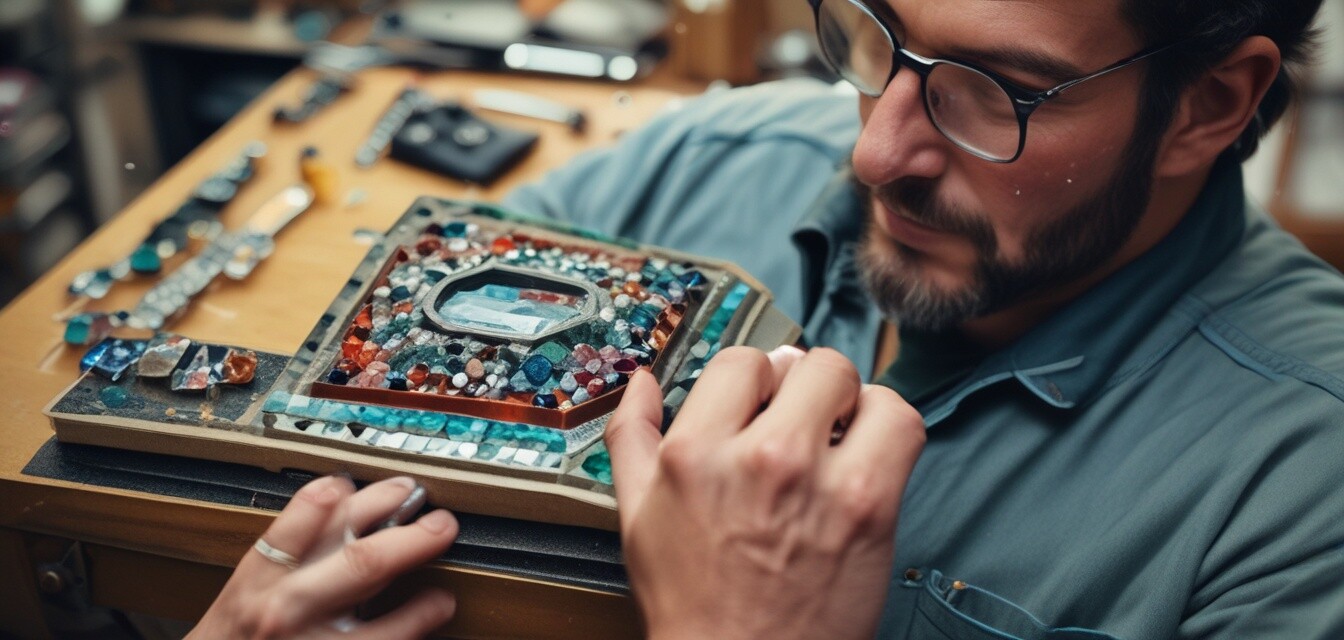
The Process of Gemstone Cutting and its Importance
Key Takeaways
- The cutting process significantly influences a gemstone's aesthetic appeal and value.
- Different cuts produce various light effects, enhancing the gem's brilliance.
- Understanding the cutting process helps consumers make informed decisions while purchasing jewels.
- Fine craftsmanship and proper tools are essential for achieving quality cuts.
This article takes you through the intricate process of gemstone cutting, exploring why it’s a vital step in revealing the true beauty and value of these precious stones. From strategic planning to the final polish, understanding this process enhances not only the appreciation of fine jewelry but also your knowledge as a buyer.
Understanding the Gemstone Cutting Process
The gemstone cutting process involves several steps, each crucial for revealing the stone’s potential. Below, we will break down the primary stages of cutting gemstones to give you a clearer understanding of how your favorite jewels are shaped and polished.
| Stage | Description |
|---|---|
| Planning | This stage involves analyzing the raw gem, determining the best way to maximize its beauty and value. |
| Cleaving | In this step, the rough gemstone is split into smaller pieces as per the planned design. |
| Shaping | The gemstone is fashioned into the desired shape, whether it be round, oval, or others. |
| Faceting | Creating facets, or flat surfaces, that allow light to reflect and refract beautifully. |
| Polishing | The final step where the facets are polished to create a smooth, shiny surface. |
The Importance of Gemstone Cutting
The importance of gemstone cutting cannot be overstated. The quality of the cut affects not only how the stone looks but its overall value as well. Below are some key points about why this process is so critical:
Pros
- Enhances brilliance and sparkle of gemstones.
- Improves visual appeal, making stones more attractive to buyers.
- Maximizes the market value through expert cuts.
Cons
- Quality cuts require skill, which can be costly.
- Improper cutting can lead to loss of material.
- Time-consuming process that may delay the availability of final products.
How Gem Cuts Affect Light Performance
The way a gemstone is cut impacts how light interacts with it. For example:
- Brilliant cuts enhance sparkle and are popular in diamonds.
- Emerald cuts emphasize clarity and offer a more understated elegance.
- Old cuts tend to showcase vintage charm and unique character.
Understanding how these cuts affect the way light enters and exits the stone is essential for appreciating their beauty.
Expert Insights on Choosing Cut Gemstones
According to industry experts, when selecting a gemstone, pay close attention to the cut as it often dictates the gem's overall personality. For more insights, feel free to visit our Expert Insights section that provides tips directly from professionals in the industry.
Final Thoughts
Understanding the gemstone cutting process gives you a richer appreciation of these precious jewels. From the planning stage to the final polish, skilled artisans transform raw stones into breathtaking masterpieces. If you're looking to purchase fine jewelry, ensure to consider the quality of the cut, as it plays a vital role in both aesthetic appeal and value.
For those interested in learning more about buying gems, check out our Buying Guides page where we provide comprehensive advice on choosing the perfect gemstone.